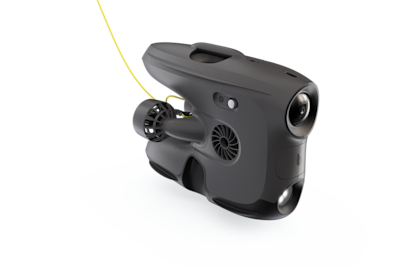Search and rescue
The ocean can be a tough place to be, and sometimes things go wrong
Explore products Talk to an ROV expertIncrease your capacity to conduct underwater searches
The Police and the Fire Brigade are quite often called out for missions to search for missing persons or to conduct further investigations below the surface. To streamline this work, they can now use underwater drones.
No need for ROV pilots
Equip your team with tools to perform the inspections themselves. Expand their capabilities and utilize their expertise and knowledge.
Quick deployment
Deploy within minutes and perform your inspections efficiently to optimize your resources.
Use your team's knowledge
Equip your team with tools that expand their capabilities and that provides them with vital information to make good decisions.
Webinar - USE OF BLUEYE DRONES IN ROUGH ENVIRONMENTS
In this webinar you'll learn more about how to tackle difficult missions with the Blueye underwater drones.
Blueye Explains / Episode 27
ROVs for search and rescue
Marketing & Support Specialist Anupama Pantheeradiyil explains ROVs for search and rescue
See all episodesSupport
Receive quick support from our engineers who built the underwater drones. Customers rate, on average, the support they get from us to a 93% satisfaction score.
Read moreHelp Center
Find loads of articles and videos on utilizing and maintaining the underwater drone on our Help Center and Youtube channel.
Browse our Help CenterA tool you can trust - always
Robust and user friendly techonology with documented results within a range of industries.
Read more“
We have been with the customs on one of Norway's largest cocaine seizures. We have also found two who have had an accident underwater, the last one was now in Easter week, a man who was out fishing and was found at a depth of a hundred meters and was actually brought up by this ROV from Blueye.
- Stein Magne Eidissen, Commander, The Norwegian Coast Guard

Custom Package
The Blueye X3 ROV package
As inspections or underwater operations demand different setups, we encourage you to get in touch with us to help you with a customized package that suits your needs.
Based on feedback from our users we recommend professional customers to include their Blueye X3 order with an aluminum Zarges case, reel with 150 meter tether, Blueye High Capacity battery and Rugged controller. However, you are free to equip you ROV as you see fit for your usecase. We offer equipment from a wide range of suppliers, and other necessary ROV parts such as tethers come in different lengths.
The Blueye X3 ROV can be equipped with a variety of sensors, manipulators, sonars, and positioning systems.
The price for a recommended kit starts at $30,788 ex.VAT
Request a quote
Get the latest user stories and updates from us!
Newsletter sign-up
Talk to an ROV expert
If you have any questions, please do not hesitate to reach out directly!

Start a conversation
Ask for a local representative
We have world wide presence through our Blueye Partners.

